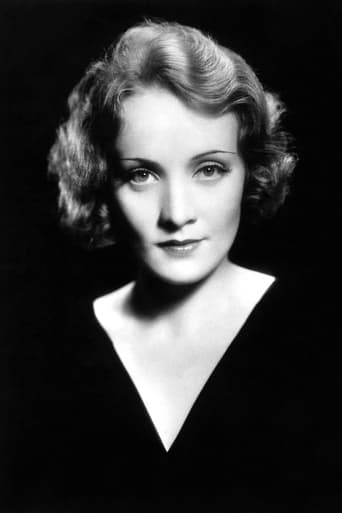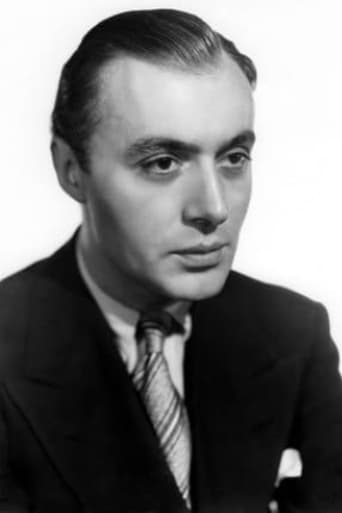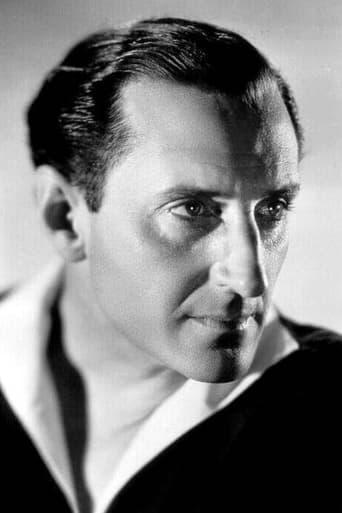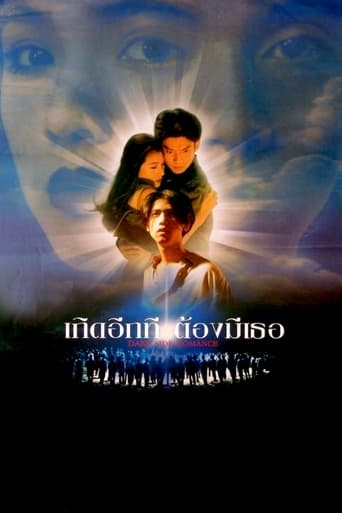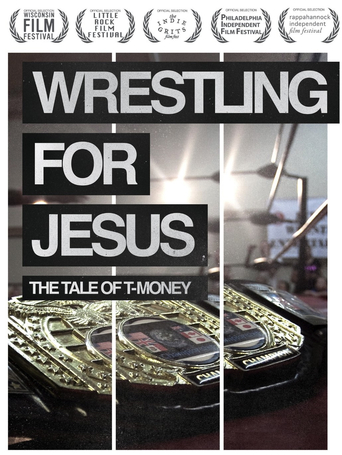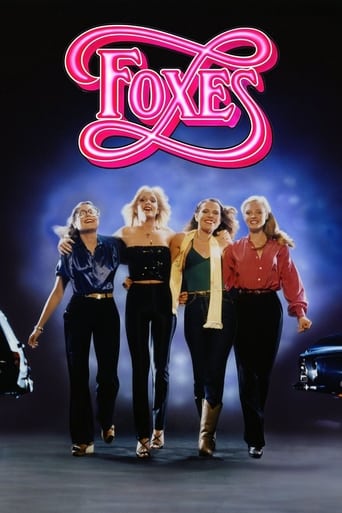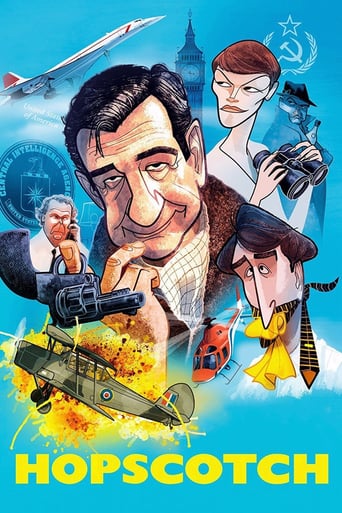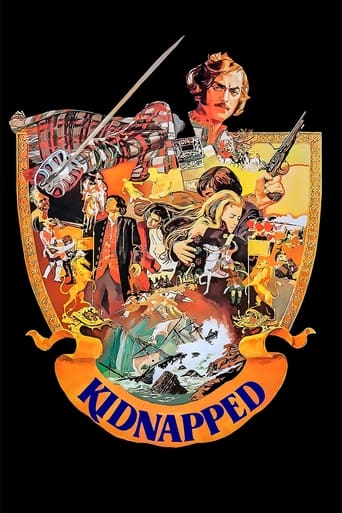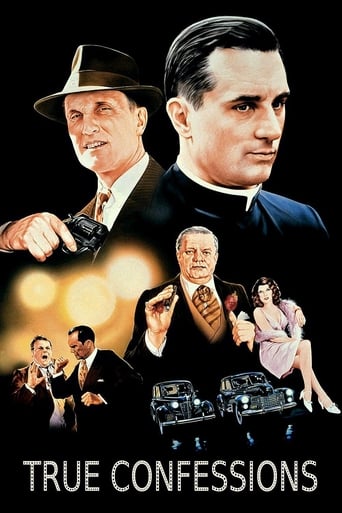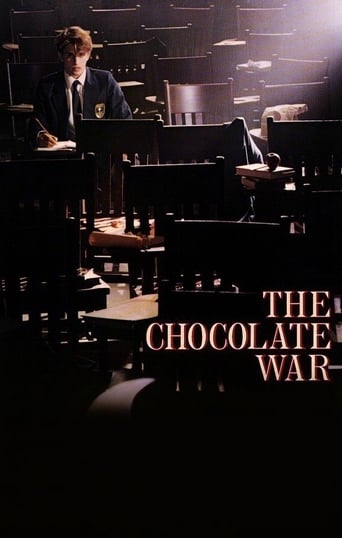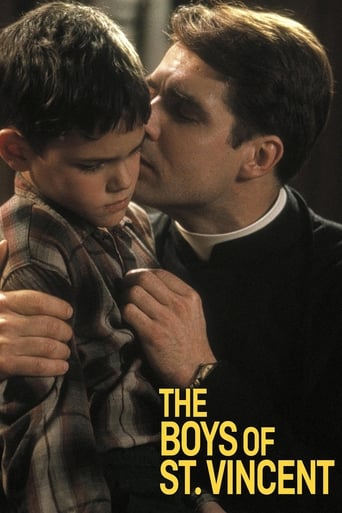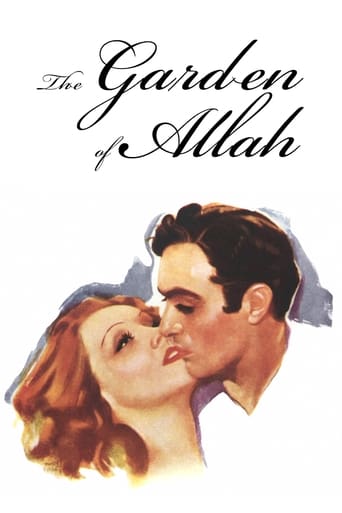
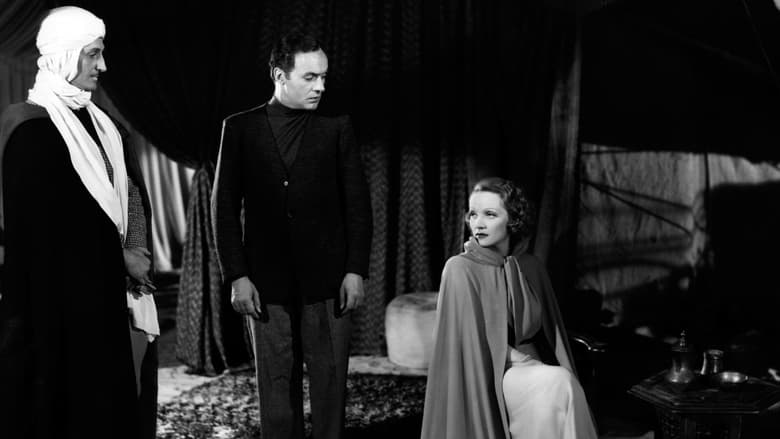
The Garden of Allah (1936)
The star-crossed desert romance of a cloistered woman and a renegade monk.
Watch Trailer
Cast


Similar titles
Reviews
After her father expires, moody Marlene Dietrich (as Domini Enfilden) leaves her convent to seek solace from God in the Sahara Desert. Meanwhile, chaste Charles Boyer (as Boris Androvsky) abruptly leaves his monastery. After taking his sacred vows, he's off to find "love" in the desert. They seem like a match made in Heaven, but don't be fooled. The copulation turns out to be an affront to God. Even worse, for lovers of liqueur, Mr. Boyer takes with him the secret recipe of an alcoholic drink, handed down from monk to monk. "God will not punish us," declares Ms. Dietrich, "if we can trust Him to show us the way..."Although "The Garden of Allah" drew viewers into cinema seats, there weren't enough to justify the cost. The film helped studios decide stars like Dietrich and Boyer looked more profitable in black-and-white. Classic performers did not always appear in color; a major star's paycheck already upped the budget. Herein, Dietrich models and Boyer pouts... The film's main strength is the outstanding achievement in color photography, by W. Howard Greene and Harold Rosson. A fine supporting cast helps, especially fast-talking Joseph Schildkraut (as Batouch). And, dancer Tilly Losch (as Irena) make a great first impression.***** The Garden of Allah (10/15/36) Richard Boleslawski ~ Marlene Dietrich, Charles Boyer, Joseph Schildkraut, Basil Rathbone
"Sunshine all the time makes a desert." (an Arab proverb).A viewpoint that great visuals and skillful performances are enough to turn even a dull screenplay into an entertaining motion picture seems too much simplified. However, in some instances, such perspective occurs to make sense. Seldom may it occur as relevant as in THE GARDEN OF ALLAH directed by Richard Boleslawski and produced by David O. Selznick. The strengths of the movie do not lie in clever storyline but in amazing camera and lighting work as well as performances. As one of the first three strip Technicolor films after BECKY SHARP and long before THE WIZARD OF OZ, the colors of THE GARDEN OF ALLAH have much to boast of. In many of its scenes attempted at purely visual experience, the aesthetic impressions are in no way dated. Clarence Slifer, collaborating with other artistically innovative people, does a wonderful job. Just to note the effective use of red (one of the most beloved colors in the period of color experimentation) symbolizing the land of fire and desire where the protagonists' destinies meet, the shots of the desert as backdrop with persons and caravans in silhouettes as well as the interiors. The elaborate visuals are particularly memorable in a little scene of Domina and Father Roubier when he tries to warn her against the man she loves. Consider the particular detail as she leaves the sacristy. Besides the cinematographic pearls of location shots and camera work, what strongly contributes to the memorable impressions are costumes by Jeannette Couget and music by Max Steiner (in particular the use of Schubert's "Ave Maria" and the atmospheric song "No One But God and I Know What is in My Heart"). But let me now develop, perhaps, the most striking feature of the film – performances, which I am not going to divide into main roles and supporting characters since this is one of the movies of the 1930s which cannot be treated as 'a vehicle' for Marlene Dietrich solely. Single individuals deserve unique praise for making the hardly believable content still communicative.Marlene Dietrich, freed from the guidance of her tutor Josef Von Sternberg) portrays a character whose mind and dreams are occupied by the search for happiness, for finding herself. As a young, beautiful actress with subtle presence on the screen and girlish movements she is nothing but outstanding. The effect of her screen presence is, of course, multiplied by the use of colors and a number of costumes she wears. Ms Dietrich reminds me a lot of her earlier role (also away from Sternberg) in THE SONG OF SONGS. However, she is not Garbo who proved to be 'a queen on her own' preferring to be left alone to go on with her lines and cooperation with the camera. Dietrich was more generous with her co-stars. Consequently, Ms Dietrich cannot be considered fully without her leading men. And one is truly captivating. That is... Charles Boyer. Although his character lacks logical sense of his motifs and may be less communicative with audiences, he proves unbelievable acting skills. His performance is filled with extravaganza, rebellious attitude, self-imposed, almost blasphemous ignorance of the hard past, neurotic struggle for materializing his inner desires. It is all a great insight into the tormented, almost tortured character who does not seek refuge in loneliness but in the arms of a woman. Having experienced the extreme silence and hermit-like life as a Trappist monk, his tortured soul strives for passions (to fulfill them) and the fire of lust (to extinguish it). While Ms Dietrich's scene is the memorable finale (after she received the harsh test she prayed for), his moment is the speech scene when teary eyes and sweaty forehead manifest the most inner struggles. Although it does not necessarily work so logically, the moment is worth seeing thanks to his compelling performance. Even the liqueur would not taste that good... Although Boyer worked with the various female stars of the time, including Garbo and Bette Davis, there is a strong chemistry between him and Marlene Dietrich. Their scenes are sweet, fussy and overly sensitive but worth seeing. The finale is also something of a genius collaboration of the leading protagonists. Joy, tears, smile evoke.Joseph Schildkraut has particularly witty and charming moments as Batouch, a sort of character no one will be after but everyone will like. C. Aubrey Smith with his specific strength and rhetoric in his performances crafts the role of Father memorably. I particularly sympathized with his sweet dog that seems to perceive sometimes more than humans do. Basil Rathbone carries the restrain and appeal as Count Andreoni. Apart from them, there are two of the cast who, though given just a minimum time on the screen, and yet appear to be truly memorable: John Carradine as a seer who, in a haunting moment, foretells Domina's future and Tilly Losch as a dancer who, in her Salome-like lustful crush, provides the movie with one of the most erotic sequences ever found in motion picture. And finally, who contributes to the entertainment and mood are great extras who speak gibberish in the backdrop.But who is in the lead? No one so much as the title garden of Allah itself with its endless attraction and cleanliness of catharsis, with its oases of fresh water and the heat of vast loneliness where you can hear the whisper of your inner self, the desert.All is touched by the search of happiness that the protagonists struggle to find. The desert seems to be a perfect place for that target and yet...do they find it? The unforgettable finale seems to answer this question where the religious and the secular, where purity and desire reach the heights of their mutual, though fairy tale, collaboration. But if you seek something thought provoking, search for it elsewhere...enjoy the visuals and performances offered by THE GARDEN OF ALLAH.
This film, based on an old novel and several silent treatments is dramatically pretty good, with Charles Boyer and Marlene Dietrich meeting and romancing in the desert. Tilly Losch's exotic dance is but one visual highlight in what has to be one of the most gorgeous pictures of the 1930s. The Technicolor photography at this early date is beautiful to behold and the print on the DVD has been astonishingly well preserved. What a revelation this must have been to audiences in 1936. As one of the first three-color Technicolor features, the contrast between this and the old two-color systems gives a vivid life-likeness to experiencing this film. A must for students of early color.
The bad babe who gave Destry such a hard ride? Or Lola Lola, The Blue Angel? Or Bijou Blanche, one of The Seven Sinners? Or Concha, The Devil (who) Is a Woman? Well, it was indeed Marlene Dietrich, the great actress. She must have been one if she could so convincingly play such a vulnerable, sweet, unworldly, deeply religious woman in The Garden Of Allah, when she was happily typecast in the movies as a trollop and was likewise dedicated to that role in real life. A down and dirty slut and proud of it, who abandoned a husband and daughter in Germany to run off to Hollywood with Joseph Von Sternberg and pursue fame, fortune, and sin. Who would drop her drawers for any willing actor, along with a few actresses, and, if we believe her claims, for President Kennedy in the White House when she was sixty years old! Yes, that Marlene, contrary to what some other reviewers have alleged, gives a moving performance as a convent-raised good Catholic girl, who falls in love with a runaway Trappist monk (Charles Boyer). He is tormented by having broken his vows, even more so after he marries her without telling her his secret. When she finds out, she joins the torment, her own deep faith at war with her passionate love for him. There is a bit more to the plot than that, but it mainly hinges on the spiritual conflict between faith and the world.And it is beautifully realized in this beautifully filmed early (1936) perfected Technicolor picture. This is fine movie, and not just because of the spectacular color cinematography. Yet it is not for everyone, and has obviously gone over the heads of most of IMDb reviewers and voters as well as other critics, not to mention the audiences of 1936. In fact it is surprising a movie of this type ever got produced. Hollywood usually avoided a serious approach to religious subjects, but then David O. Selznick was an independent producer who went his own way. While most will appreciate the stunning visual impact of The Garden Of Allah, its storyline is too Christian and its dialog too literary and philosophical for most tastes. This is a movie that can be fully appreciated and enjoyed only by Christians who have had deep spiritual experiences. Perhaps only by those who have had and continue to have deep spiritual experience but also continue to enjoy the sensual pleasures of the world. For most of us Christians, it is a lifelong struggle. The Garden Of Allah paints a poignant and rewarding portrait of this conflict.Irrelegious types and lowbrows who are only looking for sex and violence may wish to skip this one. It is doubtful that Marlene Dietrich, who once described herself as having no religion, ever wanted to see this particular picture of hers. But, if she had no religion, why then did she say that one should make the sign of the Cross when speaking Orson Welles's name? Perhaps somewhere inside the big whore Marlene, there was a little shriveled up Marlene who knew God.


